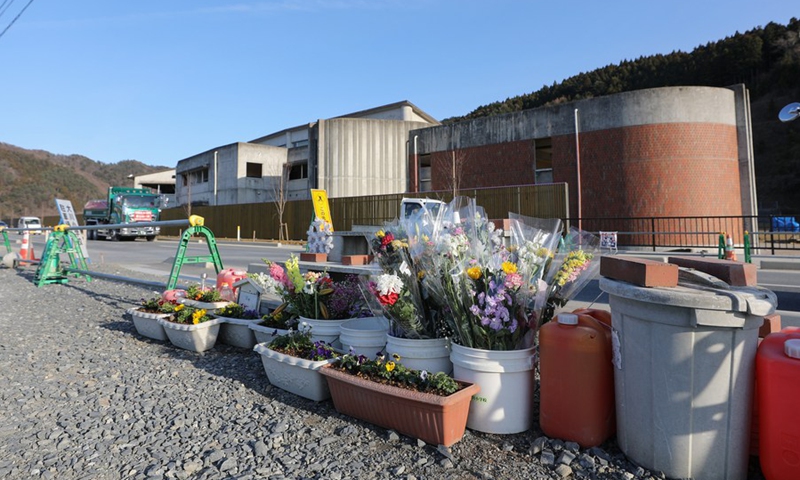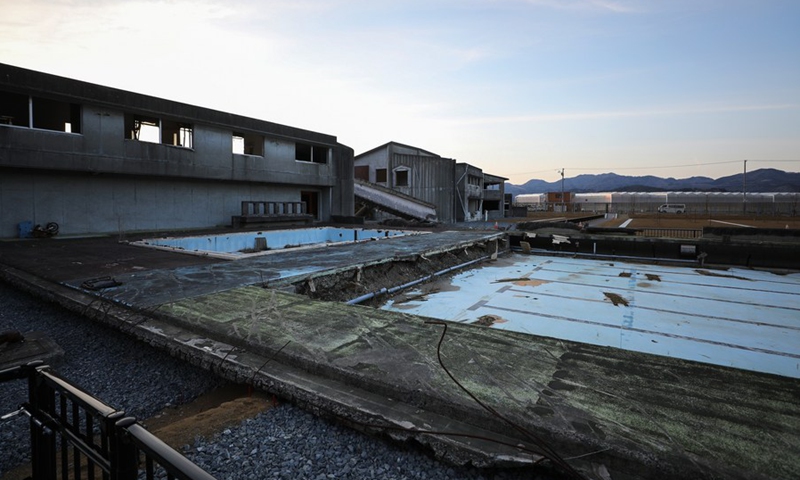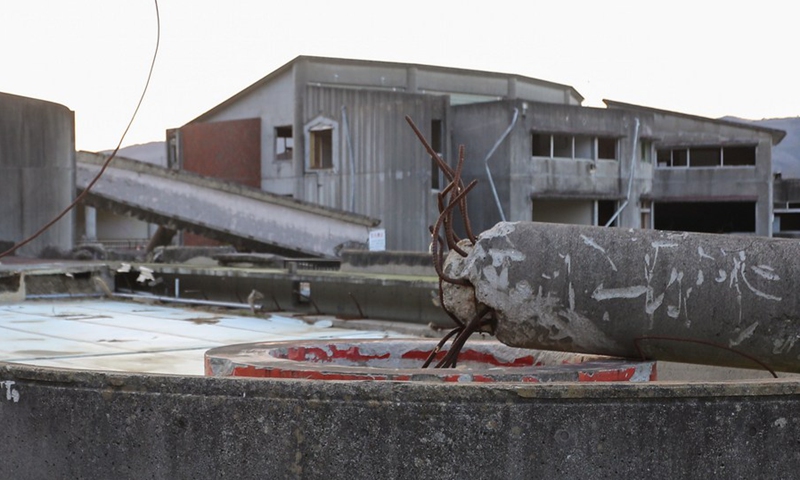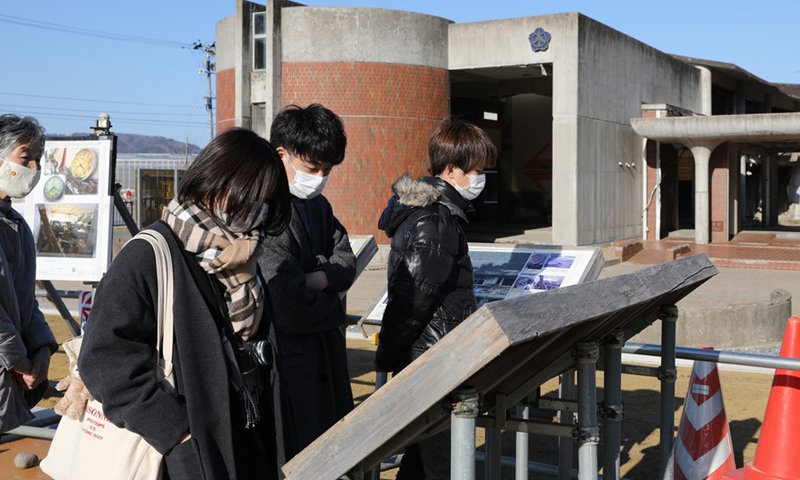
Flowers are laid in front of the ruins of the Okawa Elementary School in Ishinomaki, Japan, March 9, 2021.(Photo: Xinhua)

The ruins of the Okawa Elementary School is seen in Ishinomaki, Japan, March 9, 2021.(Photo: Xinhua)

The ruins of the Okawa Elementary School is seen in Ishinomaki, Japan, March 9, 2021.(Photo: Xinhua)

Visitors watch photos of the school before the disaster displayed at the ruins of the Okawa Elementary School in Ishinomaki, Japan, March 9, 2021.(Photo: Xinhua)
A public elementary school in Miyagi Prefecture lost more than 80 lives in the tsunami following the March 2011 earthquake in northeastern Japan. Ten years on, the ruins of the school building still tell the unimaginable tragedy of the calamity.
Okawa Elementary School, located on the bank of the Kitakami river and about 4 km off the coast, were engulfed by the tsunami as the pupils and teachers began evacuating to a nearby hill.
Finally, only 34 out of the school's 108 students and one out of 11 teachers survived the tsunami.
A sign at the site showed that the earthquake occurred at 2:46 p.m on March 11, 2011, and the tsunami reached the school 51 minutes later.
The only surviving teacher explained that the school, which had been designated as a local shelter, had instructed students to run out of the building and wait on the playground after the earthquake. After receiving the tsunami warning, the school began to evacuate, but the students were engulfed in the rushing water.
The tsunami was 8.6 meters high and hit halfway up the hill to the south side of the school. If the teachers and students had reached the hill top in time, they might have survived.
A 21-year-old visitor called Kogawa told Xinhua, "The campus of Okawa Elementary School is so close to the mountain behind it. It is a pity that the pupils and teachers did not take refuge there."
"If there had been an evacuation route to the mountain, this tragedy might not have happened," Kogawa added.
In March 2016, Ishinomaki City Mayor Hiroshi Kameyama said that it was necessary to turn the Okawa Elementary School into a memorial site.
"It will help future generations remember the dangers of earthquakes and tsunamis and keep vigilant. It will also help to carry out disaster prevention education in these places," he said.
A 29-year-old woman who volunteered to clean up at the school told Xinhua that she hopes people from all over the world will come and have a look around the school, especially those who know nothing about the earthquake and tsunami disaster.
"No one can say that they will not be confronted with the same disaster in the future, so we hope that everyone can make preparations in advance," she added.
Kogawa, the visitor, said, "While these ruins may evoke sad memories for the families of the victims, for teachers who want to learn how to protect the lives of their students, being on the scene is a way to learn something that is not in the disaster prevention manual."
He added that his hometown Niigata, also a prefecture on the coast, may also face tsunamis and heavy rains sometime. He wants to be a local civil servant in the future and contribute to the disaster prevention work in his hometown.
Nowadays, a memorial hall is under construction on the opposite side of the school. Meanwhile, a park with the theme of disaster prevention and relief education will be built around the school site.
